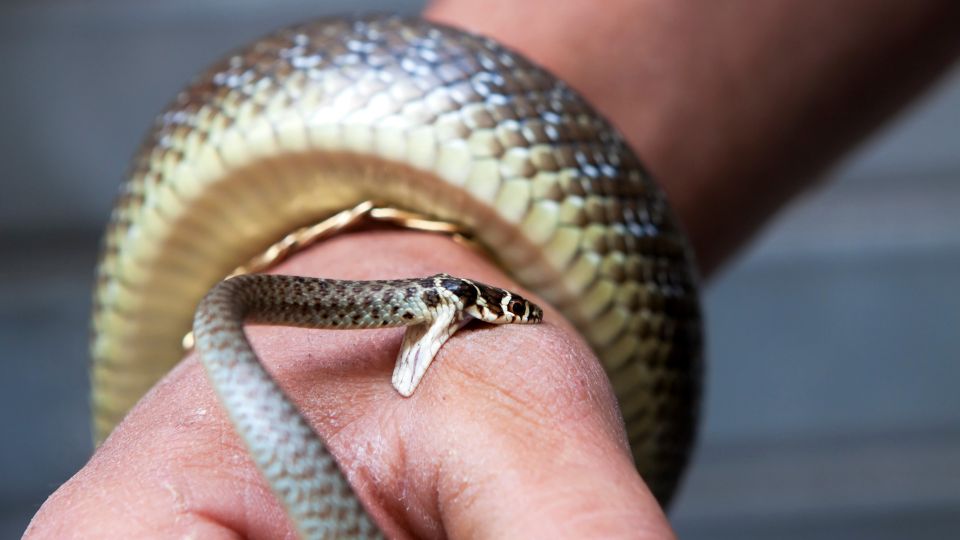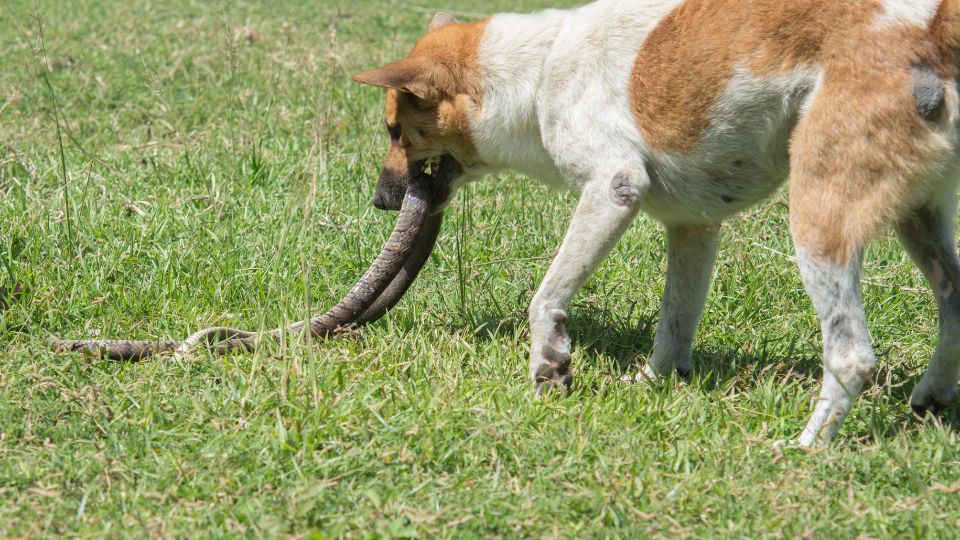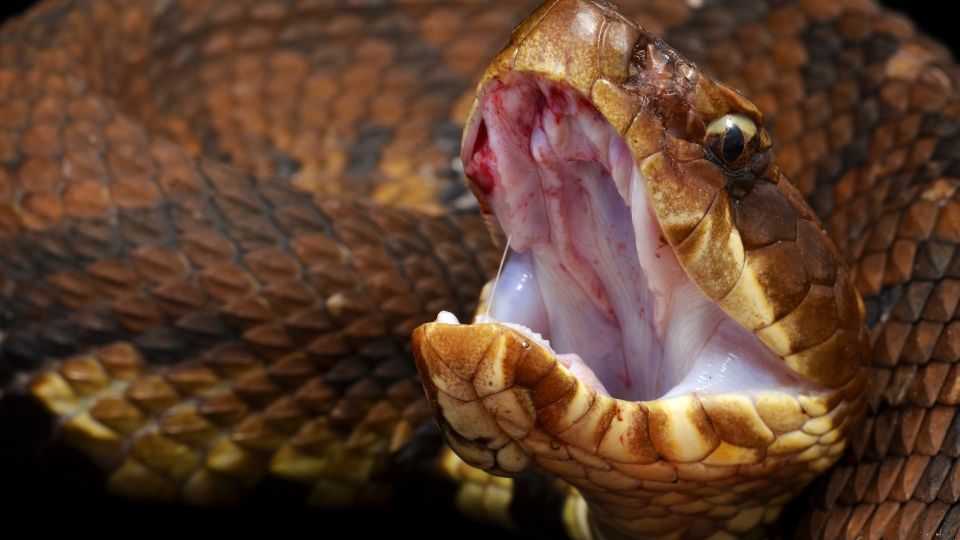Snakes usually bite for self-defense or to capture prey. There are so many types of snakes, including both non-venomous and venomous. Different snake species have different venom types. Always seek immediate medical attention if ever bitten by a snake and avoid any form of first aid.
Indeed, “can snake bite?” is a rhetorical question. Snakes have been dreaded for ages due to their venomous bites that can cause life-threatening injuries in minutes.
However, some dangerous, venomous snakes may ‘dry bite‘ where the venom is not released. Regardless, you should always take snake bites seriously.
This article will look at venomous and non-venomous snakes, how to know which snake bit you or your pet, and what to do in such a scenario. Read on!
Table of Contents
What are snake bites?
Snakes typically bite for self-defense or to kill prey. With so many types and species, not all snakes are created equal.
The significant categories of snake venoms include:
- Cytotoxins: These snakes cause tissue damage and swelling around the affected area.
- Haemorrhagins: This venom interrupts the blood vessels
- Neurotoxins: This venom affects or damages the nervous system or causes paralysis
- Anti-clotting agents: This venom prevents the blood from clotting
- Myotoxins: This venom breaks down the muscles

Can a snake bite you or your dog?
Yes, it happens! Around 150,000 pets are bitten by venomous snakes annually in North America.
Bites from non-venous snakes are more common. Therefore, it’s crucial to identify snakes that bite and snakes that don’t bite, how to treat them, and, more essentially, how to evade them altogether.
Once you identify that a snake has bitten your dog, never try any life-saving procedures on your own; take it to a veterinarian clinic instantly.
Dog snake bites are known as envenomation in clinical or veterinary terms.
How do you know if a snake bit you?
Around 7,000 venomous snake bite cases are reported annually in the U.S.
Contrary to what most people believe, venomous snake bites are rarely lethal, and only around six fatalities are reported annually.
However, these should always be treated as a medical emergency as even a snake bite from a nonvenomous snake can be severe, causing an infection or allergic reactions.
So, how do you know a snake has bitten you?
The signs and symptoms may vary depending on the snake type, but they mainly include:
- Redness, bruising, swelling, blistering, or bleeding around the bite
- Two puncture wounds
- Pain at the site of the bite
- Difficulty in breathing
- Blurred vision
- Vomiting and nausea
- Numbness in the limbs and face
- Sweating and salivating
- Muscle twitching
- Rapid heart rate, low blood pressure, weak pulse

What happens when a snake bites you?
Snake venom is believed to have evolved independently at least a hundred times to do specific jobs in the victims they envenomate.
Learn what snake venom does to you, why some species are more dangerous, and why speed is crucial when treating snakebite.
There are two types of venomous snakes known as vipers and elapids. The venom from these two different types does different things to the victim.
Vipers
Vipers, which include rattlesnakes and adders, contain venom that is haemotoxic. This implies that they target the circulatory system causing bleeding or interfering with the blood’s ability to clot.
Elapids
The most popular snakes are elapids, which include mambas, cobras, taipans, and kraits. Their venom usually is neurotoxic, meaning it interferes with nerve impulses transmission. The bite has an immobilizing effect making the victim’s body become limp or turn rigid.
How do you know if a venomous snake bit you?
A common indication that a venomous snake bit you is the presence of double puncture wounds from the snake’s fangs.
Other signs include:
- Severe pain at the site of the bite
- Difficulty in breathing
- Blurred vision
- Vomiting and nausea
- Numbness in the limbs and face
- Sweating and salivating
- Muscle twitching
- Rapid heart rate, low blood pressure, weak pulse
- Redness, bruising, swelling, blistering, or bleeding around the bite area

Will a snake bite you in your sleep?
Most venomous snakes tend to bite people who surprise or are handling them.
However, a new study shows that the enormous Australian mulga snake attacks people in their sleep. The study showed twenty-seven cases of people bitten by the snake; seven were asleep during the act between midnight and five a.m.
This statistic represents seventy percent of the cases involved without intentional contact showing that snake bites sustained during sleep could be more common than hitherto reported.
What to do if a snake chases you?
Most snake species will get away as fast as possible. Still, some tend to be aggressive and will chase you, especially during the mating season or protecting a nest of eggs.
The ideal thing is to turn around and run as fast as possible, as the snake will quit the chase after a few meters. First, try not to panic and stay calm to make the best decision.
Avoid startling the snake and walk away.
You can also make some loud noises to scare the snake away. Although they don’t have ears, they’re susceptible to vibrations. You can bang some branches or sticks together, stomp your feet, or raise your voice.
If you encounter one around your home, always call a professional for assistance and avoid removing it yourself.

What to do if a snake bit you or your dog?
If you suspect a snake has bitten your dog, the first thing is to look for veterinary attention instantly.
Most dogs will survive a snake bite if taken care of immediately.
Call the clinic or vet before your arrival so that they can make the required preparations and get the antivenom to save your dog as soon as you arrive.

